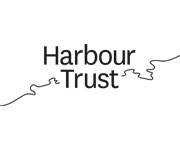The Power of Prevention: Why Preventive Maintenance Planning Strategies Prolong Asset Lifespan
In the realm of asset management, the adage "prevention is better than cure" holds immense significance. Implementing preventive maintenance planning strategies is not just a proactive approach; it's a fundamental necessity for organisations looking to maximise the lifespan and value of their assets. In this article, we'll explore the importance of preventive maintenance planning strategies in prolonging the life of assets and the various benefits they offer.
First and foremost, preventive maintenance planning strategies help to mitigate the risk of unexpected failures and breakdowns. By identifying potential issues early on and implementing proactive maintenance measures, organisations can address underlying problems before they escalate into costly emergencies. This proactive approach minimises downtime, reduces repair costs, and prevents disruptions to operations, thereby enhancing overall productivity and efficiency.
Moreover, preventive maintenance planning strategies contribute to the optimisation of asset performance and reliability. By establishing regular maintenance schedules and conducting routine inspections, organisations can ensure that assets are operating at peak efficiency levels. This not only improves asset reliability but also enhances operational performance, quality, and consistency. Additionally, by addressing minor issues before they affect performance, organisations can maintain a high standard of output and customer satisfaction.
Furthermore, preventive maintenance planning strategies play a crucial role in extending the lifespan of assets. Regular maintenance and timely repairs help to prevent premature wear and tear, corrosion, and deterioration of assets. By taking proactive measures to preserve the condition and functionality of assets, organisations can maximise their useful life and derive maximum value from their investments. This not only reduces the frequency of replacements but also delays the need for costly upgrades or overhauls, resulting in significant cost savings over time.
In addition to cost savings and operational benefits, preventive maintenance planning strategies contribute to the overall safety and compliance of assets. Regular inspections and maintenance activities help to identify safety hazards, compliance issues, and regulatory requirements. By addressing these concerns promptly, organisations can create a safer work environment for employees, minimise the risk of accidents or injuries, and ensure compliance with industry standards and regulations. This not only protects the well-being of personnel but also mitigates legal and reputational risks for the organisation.
Furthermore, preventive maintenance planning strategies support strategic decision-making and asset management planning. By collecting data on asset performance, maintenance activities, and lifecycle costs, organisations can make informed decisions about resource allocation, budgeting, and long-term planning. This data-driven approach enables organisations to prioritise investments, optimise maintenance schedules, and align asset management efforts with business objectives and priorities. Additionally, by identifying trends and patterns in asset performance, organisations can anticipate future needs and plan for contingencies, ensuring resilience and adaptability in the face of changing circumstances.
In conclusion, preventive maintenance planning strategies are essential for organisations seeking to prolong the life of their assets and maximise their value. By implementing proactive maintenance measures, organisations can mitigate risks, optimise performance, extend asset lifespan, ensure safety and compliance, and make informed decisions about asset management.
Investing in preventive maintenance planning strategies is therefore not just a prudent decision; it's a strategic imperative for organisations looking to achieve sustainable success in today's competitive business landscape.














